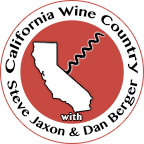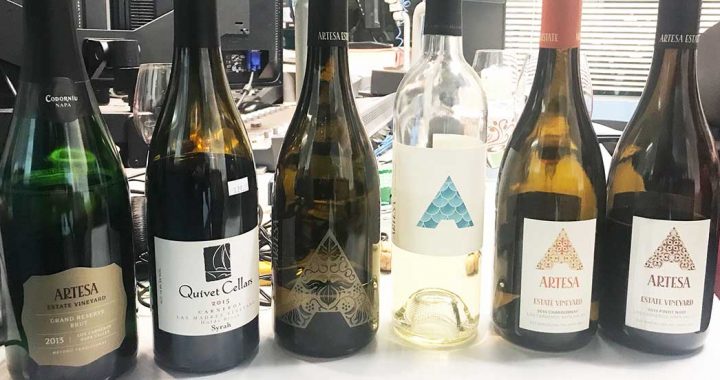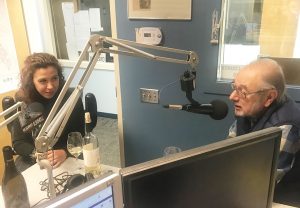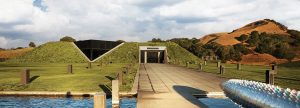Podcast: Play in new window | Download (Duration: 36:51 — 17.0MB) | Embed
Subscribe: Apple Podcasts | RSS | More
Ana Diogo-Draper of Artesa Winery joins Steve Jaxon, Dan Berger and Barry Herbst today. (There was no California Wine Country recorded on Dec. 7 due to a Golden State Warriors NBA game pre-empting programming on KSRO.)
Ana Diogo-Draper started at Artesa in 2013, became head winemaker in 2015, and we have some 2015 wines to try today. The winery has been around for quite a while, Dan says the winery, which is located in the Carneros region of Napa Valley, is a beautiful building. Ana expains that her winemaking style is intended to bring out the characteristics of the terroir which has a unique combination of limestone, sandstone and silt loam soils, and they are able to achieve a beautiful minerality and acidity in their white wines. They also have a lot of hillsides and ridges, which makes for beautiful concentraion of flavor in the Pinot Noirs. Her method is all about acidity, watching that more than the sugars.
Ana tells how she learned her winemaking skills in Portugal then came to California in 2005, got married and has been here since then. She always wanted to work in agriculture and then realized she wanted to work with wine, after a semester of a winemaking class at university in Portugal.
Steve asks what the difference is between California and Portuguese wines and she says the main difference is acidity, the wines in California are more acid driven, while the Portuguese wines are lighter and frutier.
Dan comments on an Alberiño wine, which is rare in California and more common in Spain and Portugal. It has a slightly Pinot Gris-like aroma but with a spicy aroma typical of other varieties. Ana says it’s very floral and bright, low alcohol. Dan mentions that it is completely dry and more subtle than, say, a Gewurtztraminer.
Dan mentions that a Spanish architect was brought in to design the winery and Ana says he just redecorated the tasting room too. They are redeveloping the vineyards now, studying clones and rootstocks that are best suited to their property. Dan mentions that the property is near Hyde Vineyards and that it is a special region, not often seen.
Ana Diogo-Draper holds a degree in Agricultural Engineering from the University in Évora, Portugal, which is in the region that produces cork trees.
They taste a special vineyard designate Cardonnay, which is very subtle, without heavy oak flavors and good acidity. Dan is impressed that the Artesa website lists the acid levels in their wines. Barry says that people who appreciate balance in wines will like this. He also mentions that Portuguese wines are more and more popular at Bottle Barn.
Ana Diogo-Draper was exposed to making homemade wine while growing up in Portugal, but not commercially. Dan explains the differences between Spanish and Portuguese wines. Portuguese wines get influenced by their coastal geography, while southern Spanish wines have more Mediterranean characteristcs. Portugal makes light white wines in the north too. They are hard to pronounce but delicious to drink.
After the break, they discuss the Alberiño, which Dan says could be called a semi-aromatic variety. He says if you ferment it cold, as she did, you can taste the citrus blossom flavors. Next they open a sparkling wine, a 2013 Gran Riserva Brut bottled under the Artesa label with Cornonìu Napa. It is 100% from the estate, 50% Pinot Noir and 50% Chardonnay. They make it on the property (with a lot of special equipment).
Next they taste a second Artesa Chardonnay, a 2015 Estate Vineyard Chardonnay, made with different clones and sun exposure, and picked based on acidity. About 20% is fermented in stainless steel and only about 20-25 % goes through malolactic fermentation. Dan says that Chardonnay usually needs 3-4 years to come together. This one has fruit up front and some subtle acidity, to carry it. Barry says a lot of what you’re paying for in a fine wine is the ability for it to age, in two, to five to seven years. Dan says to trust the winemaker. If they tell you it will age well, or not, they know. They see the whole process, from the fruit to the juice to the fermentation all the way through production and they know all the “numbers.”
Dan says Lisbon is a gorgeous city and very cosmopolitan.
Next they taste a Syrah that Barry Herbst brought, from Quivet Cellars in the Las Madres vineyard, off Hwy 121 before Carneros. Dan says it has an earthy character and to open it, decant it and wait a day or more. Dan says it’s classic Syrah, perfect for a steak. He says it has the stamp of Syrah made in the Rhône Valley, good acidity and plenty of tannin.
The next tasting is a great Pinot Noir, also 100% from the estate. It is 100% native ferment. Dan says it has some red cherry and blackberry, with a weight and a depth that is elegant in the finish. Dan suggests it would go well with rare roast beef, which would not overpower the wine, as a steak would. Dan says this a style that can come to define the Carneros region.
“Established in Barcelona 1551, the 17th generation still runs the company, which is the oldest company in Spain, not just the oldest wine producer. Ana gives credit to her team, that as the winemaker she gets the recognition but that they deserve the recognition too.
Dan in closing says that Ana Diogo-Draper has brought a sense of purpose and direction to what this property has always done. What is important to him and his readers is that these wines are made for the dinner table, even if they are good alone too. Ana’s wines are equally good for opening and drinking, or for enjoying with food.
Next week, Tom Simoneau will bring in his wines of the year.



